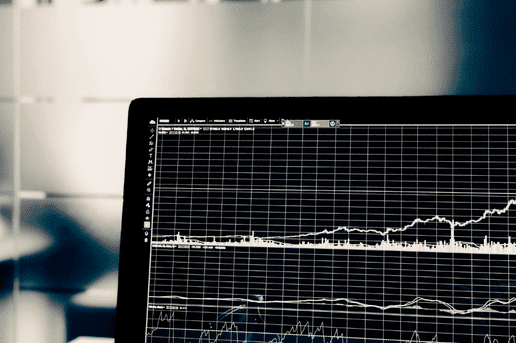
How RPA and Big Data Integrations help businesses
Robotic Process Automation (RPA) and Big Data are two technologies that are revolutionising the way businesses handle data and make decisions.
RPA allows companies to automate repetitive and manual tasks, while Big Data offers to collect, process and analyse large amounts of data efficiently. Together, these technologies can help businesses make informed decisions, improve efficiency, reduce costs and enhance the customer experience.
In this article, we will explore how RPA and Big Data are changing the way businesses operate with increased competitiveness towards success.
RPA: Automating repetitive tasks in an e2e process
RPA is a technology that enables businesses to automate repetitive and manual tasks through the use of software “robots” or “bots” that can simulate human interaction with applications and systems. This frees up company time and resources that were previously spent on repetitive work to focus on more strategic and value-adding activities. This increases people’s productivity and value, including their sense of contribution to the organisation and its activities.
In addition, RPA helps to reduce errors and improve data quality. By automating those tasks that lack strategic value, but have tactical value, the risk of human error is reduced and data accuracy is improved. This is especially important in industries such as banking and finance, where data accuracy is critical to making informed decisions and complying with regulations.
And let’s not lose sight of the cost savings that an implementation of this technology can bring, potentially reducing maintenance costs by 50% for tools that will no longer be needed and increasing employee productivity by up to 55%.
Big Data: A detailed and accurate view
Big Data is a term used to describe large amounts of data, both structured and unstructured, which are collected, stored and analysed to obtain valuable information. With Big Data, businesses can gain a detailed and accurate view of their operations, giving them the ability to spot patterns and trends in real time to make informed, fast and accurate decisions.
For example, a retail company can use Big Data to collect data from its shops and then use that data to identify trends and growth opportunities, using Machine Learning techniques.
Integrating RPA and Big Data
With the attributes of RPA and Big Data, companies gain a better understanding of their customers and the market, which can help them make more informed decisions. But how does it work in practice?
One example of how RPA and Big Data can be integrated is a financial services company that wants to improve efficiency in the credit analysis process for potential customers.
RPA can be used to automate the collection of data from different sources, such as credit reports, bank statements and tax records. Once collected, this data is stored in a Big Data system. The Big Data system then uses advanced analytics techniques to analyse and process the data, identifying patterns and trends. This information is then used to automate the credit decision-making process, allowing the company to make more accurate and faster credit decisions.
All this informational source that is Big Data, gives rise to process mining techniques, which, by exploiting all this information and using a predetermined algorithm, will allow us to perform three types of analytics:
- Discovery: identification of processes to create models.
- Conformance: comparison of the results obtained during the recording of events with the models established from the previous analysis.
- Enhancement: seeks to optimise and improve processes, by analysing the actual data.
Process Mining identifies through the use of data those tasks that can be automated and thus optimise many of the business operations and RPA will be responsible for executing it, so this is a perfect relationship between the two solutions.
Benefits of integrating RPA and Big Data in the company
Broadly speaking, we can see that the benefits of this integration are:
- Increase efficiency and accuracy in data collection, storage and analysis.
- Improve decision-making through access to more accurate and complete information.
- Reduce labour costs by automating repetitive tasks.
- Improve customer experience by providing faster and more accurate service.
- Increase the speed of innovation by enabling access to a wealth of data.
Improving the customer experience
As we have noted the integration of RPA and Big Data can also help businesses improve the customer experience. By collecting and analysing customer data, companies can personalise the customer experience and offer more relevant products and services.
In addition, RPA can automate customer service, enabling companies to provide faster and more accurate service with the inclusion of Conversational AI or intelligent document processing. For example, automating how calls and emails are handled. At the same time, the use of Big Data to analyse interactions with customers and obtain valuable information about their preferences and needs, through both predictive and recommendation modelling techniques.
With this information, companies can personalise their offers and services to better meet needs, which can increase customer satisfaction and loyalty.
RPA and Big Data use cases
RPA and Big Data are having a big impact in different industries, here are some examples.
In the Healthcare sector
RPA and Big Data can be used in the healthcare sector in various ways to improve efficiency and quality of services. One example could be the use of RPA to automate administrative tasks such as appointment management, billing and patient information management. This can allow healthcare professionals to focus on providing patient care, rather than spending time on administrative tasks.
In addition, the use of Big Data can help healthcare professionals gain valuable information about patients and their health status. For example, data can be collected from connected medical devices, such as blood pressure monitors or glucometers, and used to create a detailed patient profile. This can help doctors detect health problems early and take preventive measures.
Patient data can also be used to improve medical research and develop new treatments and medicines. In short, the combination of RPA and Big Data can help improve efficiency, quality and accuracy in the healthcare sector.
In the retail sector
Robotic Process Automation (RPA) and Big Data analytics can help in the retail sector in a number of ways, some examples include:
- Sales data analysis: retailers can use Big Data to analyse sales data from different products and categories, which will help them identify trends and patterns in consumer behaviour and make informed decisions about inventory and resource allocation.
- Inventory process automation: RPA can help retailers automate tasks such as inventory management, price updates and order tracking, saving time and reducing errors.
- Customer data analysis: Retailers can use Big Data to analyse customer data by analysing customer behaviour patterns, such as past purchases and shopping preferences, to personalise offers and improve the customer experience.
- Performance data analytics: Retailers can use Big Data to analyse their shop performance data, such as sales, traffic and staff performance, to identify opportunities for improvement and maximise shop performance.
In the logistics and supply chain sector
RPA (robotic process automation) and Big Data can be applied in the logistics sector in a number of ways, some examples are:
- Inventory process automation: using RPA, repetitive tasks such as inventory tracking and updating records in real time can be automated.
- Delivery route optimisation: Using Big Data, delivery routes can be analysed and optimised to reduce costs and improve efficiency.
- Demand forecasting: Using machine learning techniques, large amounts of data can be analysed to predict future demand for products, helping to better plan inventories and reduce storage costs.
- Parcel monitoring: Using sensors and IoT technologies, the location and status of parcels can be monitored in real time, providing online tracking and improving delivery efficiency.
There are many and varied examples of how these two great technologies combined can help companies achieve operational success. The integration of RPA and Big Data is a powerful combination that enables companies to gain a competitive advantage and improve their bottom line in an ever-changing world.
Do you want to know how we can help you with this integration in your specific case? Contact us.


